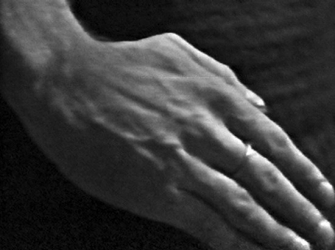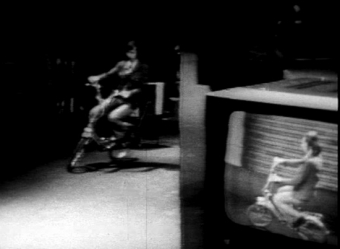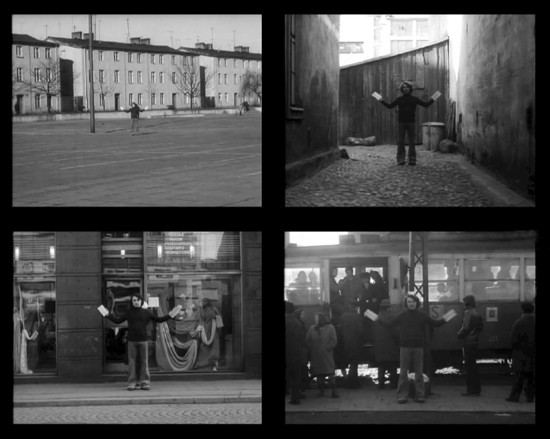In the 1970s, Paweł Kwiek (b. 1951) occupied an interesting position in Polish art as a member of the Workshop of the Film Form who was also affiliated with the Warsaw circle of artists gathered around his brother, Przemysław Kwiek, and Zofia Kulik, among others. There, he explored the potential of art for political and social engagement, creating such works as 1,2,3 . . . Cinematographer’s Exercise. He also developed a theory of objective documentary that replaced the author’s perspective with the freedom of the portrayed person or group to establish the mode of documentation or even carry it out themselves, leaving the filmmaker as merely an organiser of the framework of creative action. This theory was put into practice in the making of Kwiek’s film Niechcice (1973), which was shot together with the people of a far-off Polish village.
Video A, on the other hand, represents Kwiek’s practice within the WFF, which centred on innovative and analytical approaches to film as medium and media art more broadly. Critically embracing the technological advances that became available in Poland in the 1970s, Kwiek and other members of the WFF turned their attention to TV broadcasting, whose popularity expanded throughout the decade, marking the progress that Poland made under a new, declaratively more relaxed and open political regime. In 1974, during a live broadcast created by the WFF members on public television, Kwiek carried out his performance Studio Situation, in which he was shot by the cameramen in the studio according to his own instructions, switching among three cameras. Apart from conveying the impossibility of objective media representation and the inherent distortions that stem from the limitations of the technology itself, which was in line with WFF investigations, Kwiek focused here on the TV studio, which fascinated him as an “organism.” He also explored his interest in cybernetics, aiming to merge the human being and technology into a single circuit. Interestingly, the action resulted in yet another self-portrait of the artist, in which his practice abounds.
Though they approached it with fascination at first, the members of the WFF soon started to view the medium of television with distrust, perceiving it as a hierarchical and unidirectional propaganda tool (a critique that was also widely voiced by media artists and experimenters elsewhere in the world). They contrasted it with the newly emerging medium of video, which they regarded as far more democratic. — Łukasz Mojsak
The organizers would like to thank Łukasz Mojsak and the Museum of Modern Art, Warsaw, for their help in making a screening of this film possible in Washington.



